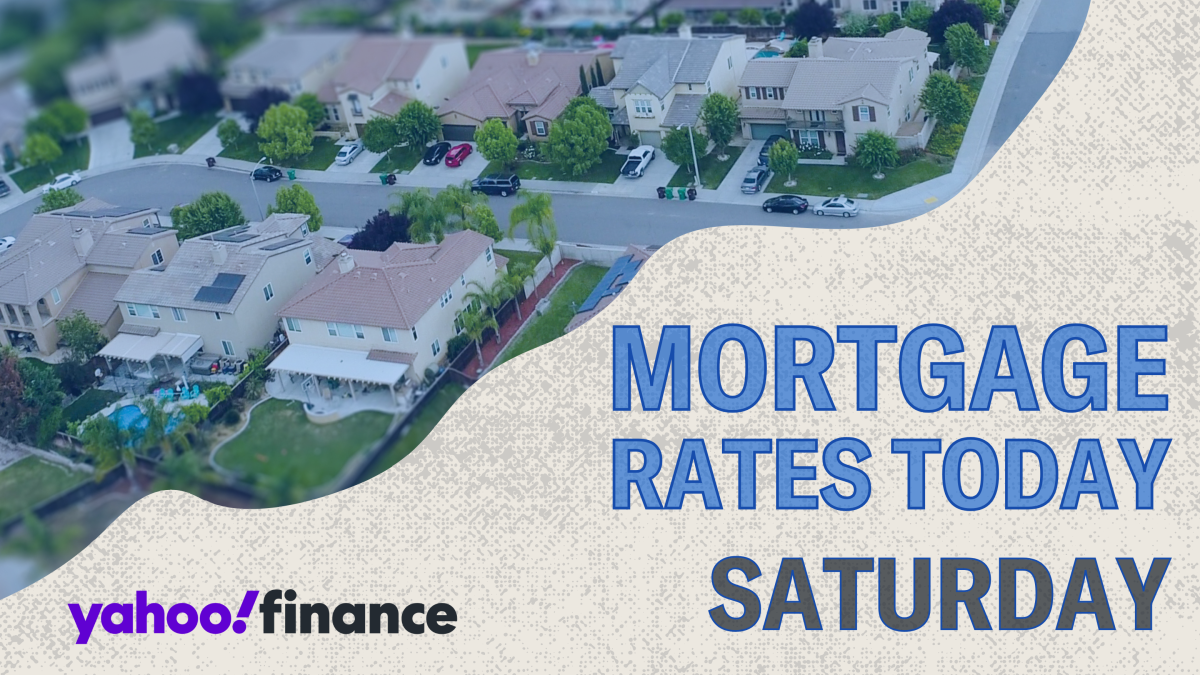Today’s mortgage rates have hardly moved. According to Zillow data, the 30-year fixed mortgage rate has increased by two basis points to 6.21%, and today’s 15-year fixed mortgage rate remains unchanged at 5.53%. The 5/1 ARM rate has decreased by two basis points to 6.76%.
Mortgage rates have been flat (and at times increasing) because the U.S. economy is relatively strong right now. Rates tend to go up when the economy is thriving and down when it is struggling. Most economists expect interest rates to fall throughout 2025.
Read more: How are mortgage rates determined?
Here are the current mortgage rates, according to the latest Zillow data:
-
30-year fixed: 6.21%
-
20-year fixed: 6.04%
-
15-year fixed: 5.53%
-
5/1 ARM: 6.76%
-
7/1 ARM: 6.90%
-
30-year VA: 5.66%
-
15-year VA: 5.22%
-
5/1 VA: 5.90%
-
5/1 FHA: 4.87%
Remember, these are the national averages and rounded to the nearest hundredth.
Learn more: 5 strategies for getting the lowest mortgage rates
These are today’s mortgage refinance rates, according to the latest Zillow data:
-
30-year fixed: 6.36%
-
20-year fixed: 6.02%
-
15-year fixed: 5.71%
-
5/1 ARM: 6.70%
-
7/1 ARM: 6.56%
-
30-year VA: 5.74%
-
15-year VA: 5.41%
-
5/1 VA: 4.98%
-
30-year FHA: 5.43%
-
15-year FHA: 5.27%
-
5/1 FHA: 4.84%
Again, the numbers provided are national averages rounded to the nearest hundredth. Mortgage refinance rates are often higher than rates when you buy a house, although that’s not always the case.
Use Yahoo Finance’s free mortgage calculator to see how various interest rates and term lengths will impact your monthly mortgage payment. It also shows how the home price and down payment amount play into things.
Our calculator includes homeowners insurance and property taxes in your monthly payment estimate. You even have the option to enter costs for private mortgage insurance (PMI) and homeowners’ association dues if those apply to you. These details result in a more accurate monthly payment estimate than if you simply calculated your mortgage principal and interest.
There are two main advantages to a 30-year fixed mortgage: Your payments are lower, and your monthly payments are predictable.
A 30-year fixed-rate mortgage has relatively low monthly payments because you’re spreading your repayment out over a longer period of time than with, say, a 15-year mortgage. Your payments are predictable because, unlike with an adjustable-rate mortgage (ARM), your rate isn’t going to change from year to year. Most years, the only things that might affect your monthly payment are any changes to your homeowners insurance or property taxes.
The main disadvantage to 30-year fixed mortgage rates is mortgage interest — both in the short and long term.
A 30-year fixed term comes with a higher rate than a shorter fixed term, and it’s higher than the intro rate to a 30-year ARM. The higher your rate, the higher your monthly payment. You’ll also pay much more in interest over the life of your loan due to both the higher rate and the longer term.
The pros and cons of 15-year fixed mortgage rates are basically swapped from the 30-year rates. Yes, your monthly payments will still be predictable, but another advantage is that shorter terms come with lower interest rates. Not to mention, you’ll pay off your mortgage 15 years sooner. So you’ll save potentially hundreds of thousands of dollars in interest over the course of your loan.
However, because you’re paying off the same amount in half the time, your monthly payments will be higher than if you choose a 30-year term.
Dig deeper: 15-year vs. 30-year mortgages
Adjustable-rate mortgages lock in your rate for a predetermined amount of time, then change it periodically. For example, with a 5/1 ARM, your rate stays the same for the first five years and then goes up or down once per year for the remaining 25 years.
The main advantage is that the introductory rate is usually lower than what you’ll get with a 30-year fixed rate, so your monthly payments will be lower. (Current average rates don’t necessarily reflect this, though — in some cases, fixed rates are actually lower. Talk to your lender before deciding between a fixed or adjustable rate.)
With an ARM, you have no idea what mortgage rates will be like once the intro-rate period ends, so you risk your rate increasing later. This could ultimately end up costing more, and your monthly payments are unpredictable from year to year.
But if you plan to move before the intro-rate period is over, you could reap the benefits of a low rate without risking a rate increase down the road.
Learn more: Adjustable-rate vs. fixed-rate mortgage
First of all, now is a relatively good time to buy a house compared to the last couple of years. Mortgage rates are significantly lower than last October, and home prices aren’t spiking like they were during the height of the COVID-19 pandemic. So, if you want or need to buy a house soon, you should feel pretty good about the current climate.
On the other hand, rates have started to inch up over the last few weeks. If you’re in no rush to buy, you may want to hold out until 2025, when mortgage rates are expected to be lower. Just remember that no one has a crystal ball about what mortgage rates will do, so there is no guarantee that rates will plummet in 2025. Also, if rates do go down, you’ll likely face more competition and maybe even higher prices to meet the demand.
Read more: Which is more important, your home price or mortgage rate?
According to Zillow, the national average 30-year mortgage rate is 6.21% right now. But keep in mind that averages can vary depending on where you live. For example, if you’re buying in a city with a high cost of living, rates could be higher.
Mortgage rates aren’t necessarily expected to go down throughout the rest of 2024, but they will likely decrease in 2025.
Overall, mortgage rates have dropped over the last year. However, they have been increasing over the last few weeks.
In many ways, securing a low mortgage refinance rate is similar to when you bought your home. Try to improve your credit score and lower your debt-to-income ratio (DTI). Refinancing into a shorter term will also land you a lower rate, though your monthly mortgage payments will be higher.





